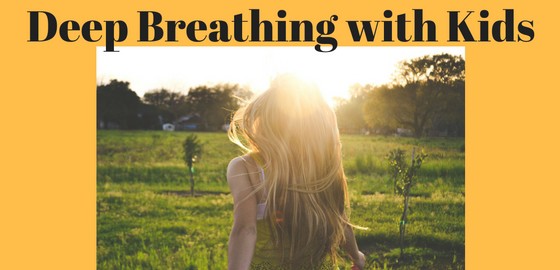Deep breathing is a skill that we can all (children and adults) benefit from having when we cope with intense emotion. I specifically work with children in my therapy office on understanding what a deep breath is and how it can be used to help calm their bodies. This post will help you think of ways that you can support your child in practicing their breathing outside of the therapy setting. The tips contained in this post have the added benefit of being helpful for adults, too
Why do I recommend learning about deep breathing?
- Deep breathing helps to trigger a relaxation response in our bodies which is key when we are experiencing intense emotion.
- The use of deep breathing can help a child cope with a variety of emotions including; anger/frustration, anxiety, poor concentration/distractibility, feeling overwhelmed. The use of deep breathing can help children when they face a very stressful situation. If you are interested in learning more about helping children cope with stressors, you may be interested in this previous series of posts focused on stressors and children.
- Deep breathing is free and can be done anywhere. This is perfect for when your child is at school or other settings where he/she may not have access to other tools they typically use to help them cope with intense emotion.
- If your child is self conscious about others knowing that they are using a coping skill, deep breathing may be something they are willing to try as often others are unaware that a child is using this skill because it requires no additional tools or other activity.
How can I teach my child to use deep breathing?
- Practice deep breathing before the child needs to use the skill. It is important to practice coping skills when we are calm.
- Coach the child while breathing until they feel comfortable using this skill on their own. Initially, we cannot simply tell a child to take deep breaths, but much model how to do so and guide them through the process.
- Emphasize inhaling, holding the breath and then exhaling. Initially, it may be helpful to count out loud while your child practices their breathing. Children should be encouraged to inhale slowly for about 4 seconds, hold their breath for 2 seconds and then exhale for about 4 seconds.
- Get creative and think of fun ways that your child may enjoy practicing their breathing:
• Blow Bubbles.
• Blow a feather.
• Practice with a Hoberman Sphere or another type of expanding ball/object. - Brainstorm positive statements (mantras) to incorporate with the deep breathing process. Children can think about these statements as they are taking deep breaths to further enhance the benefits of deep breathing. For example, “I know I can do it.” You could consider adapting some of these mantras for moms to fit your child’s needs.
Happy Breathing!
Sarah

As an adult, I learned about deep breathing to use as a skill when dealing with intense anxiety and panic attacks. It works marvelously. When I learned how to do this mindfully, it worked even better. Unfortunately, my son was already grown when I figured it out. But I have introduced him to it now as a young adult. It works!